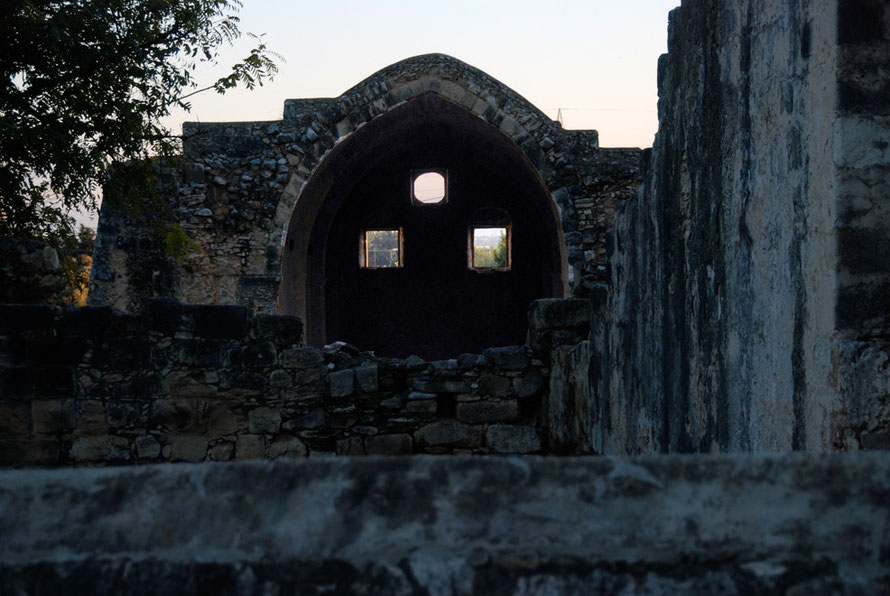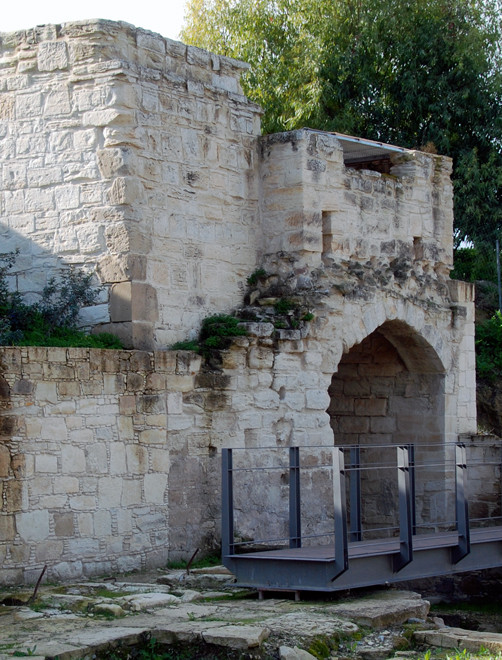VIII. 'Sweet Salt': Sugar Production in Medieval Cyprus
The history of sugar is a fascinating subject (for me at least) and a stop at the one-time HQ of the Knights Hospitaller at Kolossi in January 2013 prompted me to put together these notes on the trade in ‘sweet salt’ (as sugar was known to the Crusaders) when Cyprus was Europe’s leading medieval producer.
Human production and consumption of sugar as a mass-produced sweetener developed slowly but once it took off there was no stopping it.
The extraction of cane juice from the sugar cane plant was known in South East Asia many thousands of years ago and the people of New Guinea domesticated the sugar cane 10,000 years ago.
The cultivation of cane spread rapidly through Asia and China and India – where juice began to be converted into crystals. By the sixth century AD sugar production had reached Persia and was carried into the Mediterranean by Arab expansion. It probably reached Cyprus by the 10th century AD.
Crusaders who had encountered caravans in the Holy Lands carrying sugar – what they called ‘sweet salt’ - took small quantities back to Europe, where it reached England in the late thirteenth century.
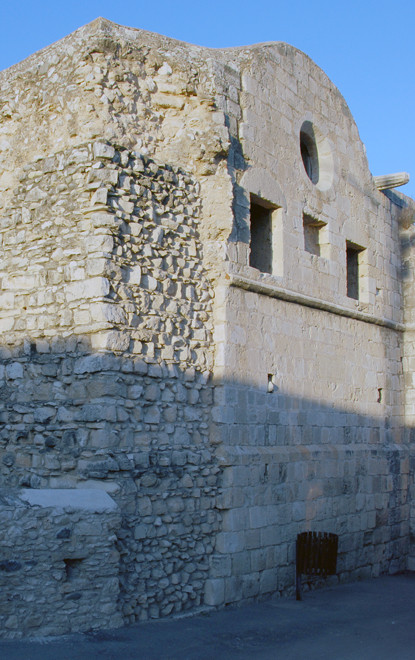
The cultivation and processing of sugar cane requires three things above all – plentiful water, capital and cheap labour.
Sugar cane requires constant, year-round irrigation for optimal production. In Cyprus water is abundant in the winter but less available in the heat of summer. Yet the cane grows fastest in the summer. Securing a reliable source of water for irrigation and motive power implied the construction of costly water transportation and irrigation systems. Remains of these can be found at Kolossi, Potamia and Kouklia.
The cane itself is very heavy and costly to transport and is best processed as close to its growing point as possible. The cane itself has to be processed quickly because it will start to ferment within a day once it has been cut.
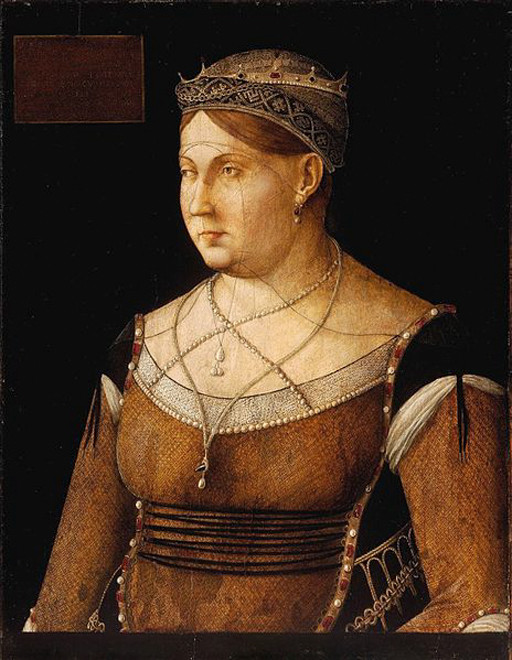
Getting the sugar out of the cane required prodigious amounts of labour. In Cyprus local people expended most of their energy growing their own food and did
not want to work in sugar production. Consequently to produce relatively small quantities slave labour was brought in from the Black Sea area - no more than a thousand a year. Although others
suggest that most labour in the industry was non-slave labour - Syrian and Greek immigrants were granted special political status to work in the industry (see Phillips below, p.95).
Sugar cane cultivation and processing also required considerable capital inputs to set up irrigation systems and construct large and technically sophisticated processing facilities.
In order to be worth the effort then there needed to be strong demand for sugar and a relatively closed market. This occurred for Cyprus in the fourteenth and sixteenth centuries due to the re-conquest of Syria by Muslims in 1291 and a Papal edict (1292-1344) forbidding trade with Muslims.
The [European sugar] industry only began on a major scale after the loss of the Levant to a resurgent Islam and the shift of production to Cyprus under a mixture of Crusader aristocrats and Venetian merchants.’

Cyprus sugar production developed sophisticated water-powered technologies. Water brought by aqueducts was channeled and directed into powerful jets to drive large 5m horizontal turbine-type waterwheels that through a vertical shaft drove vertical edge-running millstones for crushing the cane. This technology may have been imported from the Islamic Near East and was particularly adapted to mill leats with low water pressure.
The Kouklia proto-industrial site is the most complete and best-studied in the Mediterranean. From the water- and animal-powered crushing mills the cane juice flowed into large coppers set in a series of eight hearths in a large building with a stone-vaulted ceiling to keep the weather out. Under each of hearths was a fire-room sealed-off from the coppers to stop the pollution of the sugar above by ash and smoke. Access via an external door allowed wood or charcoal to be fed into the fire-room.
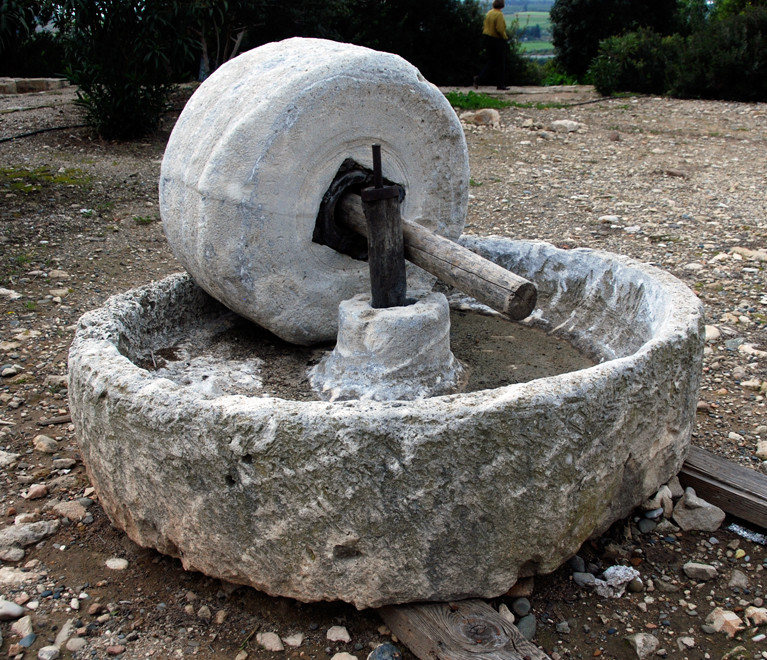
The process of production then went like this. Harvesting was followed by crushing to extract the juice. This was then boiled and purified to resulting in a mix of crystals and syrup (massecuit). At this point the mix was poured into stoppered funnel-shaped clay moulds (of which 12,000 have been found at Kouklia) sitting on top of a clay jar. The stopper kept the syrup from leaking out until it had settled and the sugar had begun to set. A day or so later it was removed and the molasses (left after the refining process) dripped into the jar beneath leaving a cone of solid sugar (a sugar-loaf) in the funnel. This could then either be broken up into polvere di zucchero (sugar powder) or exported complete in wooden boxes.
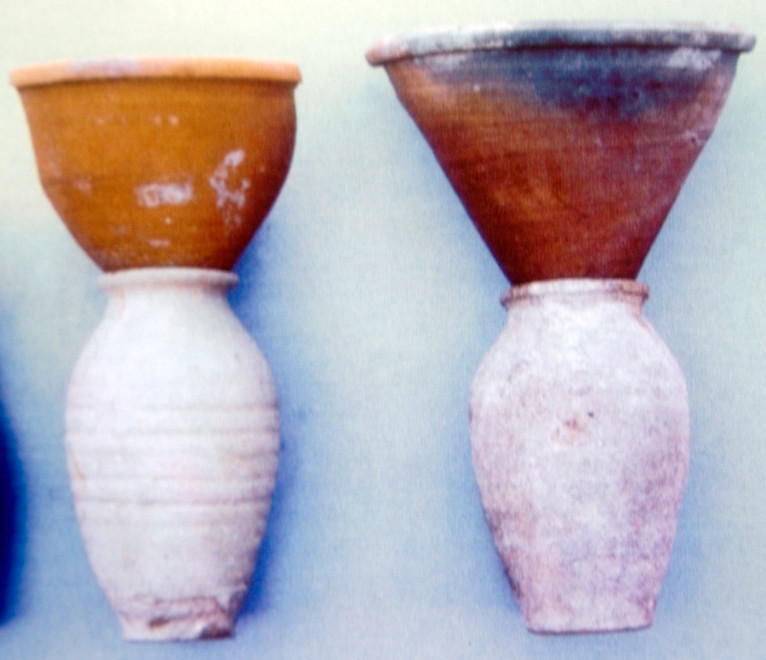
Sugar production in Cyprus had three main sites – Kouklia, Kolossi and Episkopi – with smaller works at Potamia near Nicosia (see my Nicosia to Cape Greko page) Lefka and Morphou. It is estimated that there were 400 workers at each of the three sites.
Kouklia was owned by Lusigan kings, Kolossi by the Knights Hospitaller and Episkopi by the Venetian trading family, headed by Catherine Cornaro, who became Queen of Cyprus between 1474 and 1489 (see Wikipedia: Catherine Cornaro).
The first recorded export of Cyprus sugar is in 1301 when a Genoese merchant in Pisa purchased ten chests of the commodity. The zenith of Cyprus sugar production was reached in the the sixteenth century. In the fifteenth century Cyprus was the leading sugar producer in the Mediterranean and eventually overtaken by Malta in 1490.
In 1532 Cyprus produced 33 tonnes (2205 lbs.) of sugar. Most Cyprus sugar was exported to Venice and sold for an equivalent price of $78/lb. This would have resulted in a value total for the 1532 production in today's dollar equivalents of roughly $5.7m. Not surprisingly, sugar was Cyprus’ most profitable agricultural export from the fourteenth to the sixteenth century.
See my page on the locust problem in Cyprus and the implication of deforestation (probably accelerated by the sugar-industry) in the emergence of locust plagues from the fourteenth century onwards.
But climatic conditions in the Mediterranean were marginal and low winter temperatures and occasional frost made cultivation increasingly unattractive as competition from Madeira and the Canary islands and then the New World increased through the massive use of slave labour (three-quarters of all slaves out of Africa were destined for sugar plantations). Sugar beet cultivation took off at the turn of the 19th century and by 1880 it had outstripped cane-sourced sugar.
Sources
Coureas, N., 'The Economy' in CD Schabel (ed.) Cyprus Society and Culture 1191-1374, pp.110-13.
Phillips, W., (1985) Slavery from Roman Times to the Early Transatlantic Trade
Maier, F. (2010) Guide to Palaipaphos (Kouklia), Bank of Cyprus Cultural Foundation, Nicosia.

